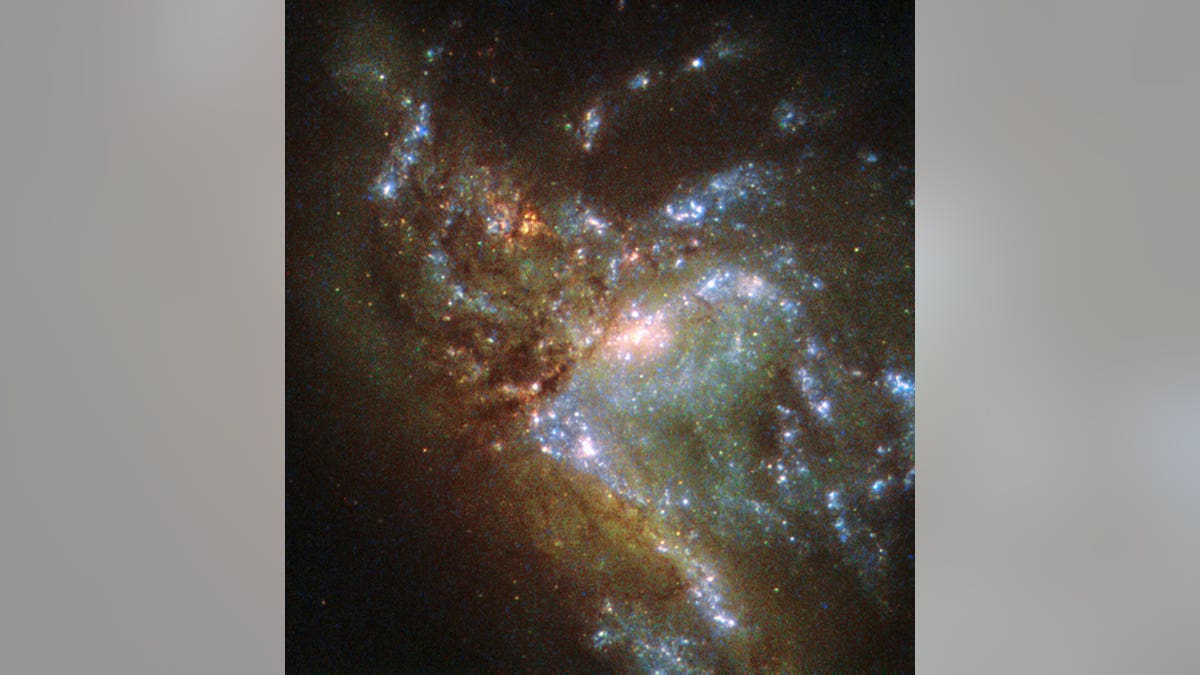
Credit: ESA/Hubble & NASA, Acknowledgement: Judy Schmidt (Geckzilla)
The Hubble space telescope has captured an incredible image of two galaxies merging.
The image, which was taken by Hubble’s Wide Field Planetary Camera 2, shows the galaxy NGC 6052, located around 230 million light-years away in the constellation of Hercules.
Related: The best of Hubble
A light year measures the astronomical distance that light travels in one year and is equivalent to 5.8 trillion miles.
“It would be reasonable to think of this as a single abnormal galaxy, and it was originally classified as such. However, it is in fact a ‘new’ galaxy in the process of forming,” explained the European Space Agency, one of NASA’s Hubble partners, in a statement. “Two separate galaxies have been gradually drawn together, attracted by gravity, and have collided. We now see them merging into a single structure.”
Related: Hubble space telescope captures stunning image of barred spiral galaxy
The ESA explained that as the merging process continues, individual stars are thrown out of their original orbits and placed onto entirely new paths, some very distant from the region of the collision itself. The new galaxy, it added, will settle down into a stable shape, which may not resemble either of the two original galaxies.
The Hubble space telescope, which was launched by NASA in 1990, celebrated its 25th anniversary last year.
In 2015 astronomers used three telescopes, including the Hubble to spot a baby blue galaxy that is farther away in space than any other galaxy ever seen. The galaxy, named EGS-zs8-1, is 13.1 billion light-years away. The telescope also captured an incredible image of a barred spiral galaxy.
